|
|












| |||||||||
|
golf golf golf tennis fly tying baseball computers sword fighting
|



there are lots of difernt flies like dry flies:suppost to float on top of the water. nymphs:are very ugly bugs. like ear wigs.that are suppost to go under water. streamers: they are suppost to look like a little fish,and go beneth the water. wet flies:they are supost to go under waterand look like real bugs under water. testerails: now these are suppost to look like the real thing like a grasshopper thats a fishing fly. bass flies:are really big and fat that ether go on top of water or the bottom of water. there is just a hole bunch of differnt flies in the world so you just tie what you like to tie so just start tying them fleis and you willget paid for some flies you tie i am still tying them to day. if you want some flies they are only 25 cents a piece. contact me at 656-0602 or 1-801-656-0602 


now with fly rods. they are very hard to cast. cause you know how you just throw it in there. well these are differnt. these you have to swing your arm back and forth.you can even do this out in your yard just tie a little piece of yarn at the end of your fly line.then just set a can out in your yard.but you dont want to hear snapping on the line.the numbers on the side of the pole is what your leader you have buy what the number says or close to it then once you have tied the leader on you will have to tie on your tippet. there will be lots numbers.when you have a fish on the line then you reel it in but when are making the fly move you have to strip the line. 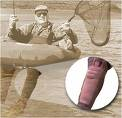
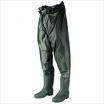
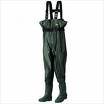
waders: you wear them when you go fishing in the water so your pants or sheos dont get while you are in the water. waders come in many shapes an sizes like small,large,regular. you just dont run in the water with them cause you will scare off the fish. you walk like the the brick is to high andput your foot back in to the water. 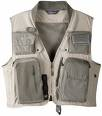

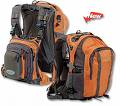
vests come in many shapes and sizes also.you can lots of tools on them to help your fishing. like catch and realease you can even put yoour leaders in the vest also. you can put fly reels,fly boxes,floatent,pleirs,sizors,and a knife. you can attach fly rods,nets.this geos over your waders.there is a little fluffy thingy that you stick your fly on when you are done with the fly. then you just tie on a new one. 
biwa trout:these trout usually found in cool, clear streams and lakes, although many of the species have anadromous strains, as well. They are distributed naturally throughout North America, northern Asia and Europe. Several species of trout were introduced to Australia and New Zealand by amateur fishing enthusiasts in the 19th century, effectively displacing several upland native fish species. The species introduced included brown trout from England and rainbow trout from California. The rainbow trout were a steelhead strain generally accepted as coming from Sonoma Creek. The rainbow trout of New Zealand still show that steelhead tendency to run up rivers in winter to spawn.[citation needed] Trout have fins entirely without spines, and all of them have a small adipose (fatty) fin along the back, near the tail. There are many species, and even more populations that are isolated from each other and morphologically different. However, many of these distinct populations show no significant genetic differences, and therefore what may appear to be a large number of species is considered a much smaller number of distinct species by most ichthyologists. rainbow trout:Rainbow trout are unusual in that although they can spend their entire life in fresh water, they are capable of migrating to sea water when conditions are right, though they must return to fresh water to breed. The freshwater form is called "rainbow trout" or "redband trout", based on the broad red band along their sides. After going to sea, their color changes, including loss of the red band, and they are called "steelhead". They occur in cool streams up to 4,500 m in elevation. Rainbows and steelhead have small black spots along their back, dorsal fin and caudal fin. Behind the dorsal fin, rainbows have an adipose fin that is commonly clipped from fish raised in a hatchery. Clipping the adipose fin helps distinguish hatchery fish from wild fish when they are taken by anglers. This allows enforcement of regulations to protect wild rainbows. Rainbows have a red or pink streak that runs from the gill cover to the caudal fin, inspiring their name. The color of a rainbow's back varies from blue or green to a yellow-green or brown. Steelhead usually lack the pink stripe and have chrome-colored sides. Rainbows are distinguished from their cousins, the cutthroat trout (Oncorhynchus clarki) by their short maxilla, which reaches to, but not past the rear margin of the eye. Rainbow trout also lack hyoid teeth, a feature present in cutthroat trout. Rainbows range from 30 to 45 cm (12 to 18 inches) in length. Steelheads grow longer, ranging from 50 to 100 cm (20 to 40 inches) in length. Steelhead range in weight from 2.5 kg to 10 kg. cuttthraot:DESCRIPTION - The average length of cutthroat trout is 12-15 inches and generally one-half to 17 pounds. A short, conical head with a somewhat pointed to rounded snout and a rather large mouth with well developed teeth on both jaws characterize the fish. In breeding males the kype is slightly developed in the anadromous population and the lower jaw appears extremely long. One of the main color characteristics is two yellow or orange to red lines in the skin folds of each side of the lower jaw. The coastal cutthroat trout is colored dark to olive-green with numerous black spots and may appear more blue with silvery sides. The interior cutthroat trout (Yellowstone/Westslope cutthroat) has a body of yellow-green with red on the sides of the head and front of the body and the belly. brown trout:DESCRIPTION - The average length of the brown trout is 16 inches and generally they weigh only a few pounds. In streams the coloring is a light brown with silvery sides and pronounced black spots on the back whereas in large lakes or in the sea the overall coloration is silvery. brook trout:DESCRIPTION - The average length is 10-12 inches but Brook Trout can be caught measuring up to 21 inches and weighing 4-6 pounds. The largest Brook trout on record was 14.5 pounds and caught in 1916 in the Nipigon River in Ontario. Breeding males develop a hook at the front of the lower jaw. Typical coloring is olive-green to dark brown on the back with silvery sides and pale spotting. All colors intensify at spawning time. lake trout:DESCRIPTION - The Lake Trout or Lake Char is typically 15-20 inches long, weighing an average of 10 pounds but they have been known to exceed 100 pounds. The body, colored light green or grey, dark green, brown or almost black with lighter colored spots is typically troutlike, elongate 
fly boxes hold all your flies together. they also come in many differnt shapes and sizes. |